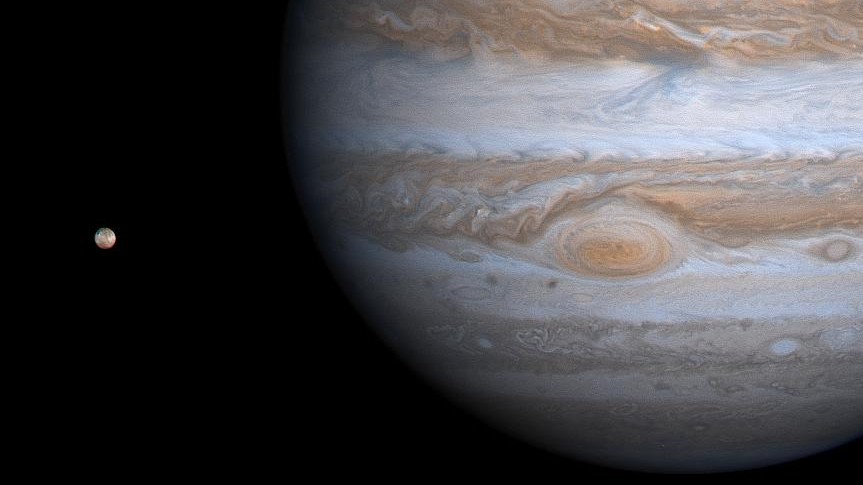Jupiter officially has the most moons in the solar system, discovery of 12 new satellites confirms
Twelve newly confirmed moons bring Jupiter's total to 92, surpassing Saturn's 83 moons.

Jupiter was already the king of the solar system, and new discoveries give the massive planet another way to reign supreme: It now has the most moons.
Twelve new moons discovered orbiting Jupiter have been confirmed, bumping the count from 80 to 92, and knocking Saturn — which has 83 moons — down a peg.
The newly discovered moons are small, ranging from 0.6 to 2 miles (1 to 3.2 kilometers) wide, and most of them have wide orbits. Nine of the 12 moons take more than 550 days to orbit the gas giant, Sky and Telescope reported. These far-out moons also orbit Jupiter in a retrograde motion, meaning they move in the opposite direction of Jupiter's rotation. Their distant and retrograde orbits likely mean these objects used to be asteroids and eventually got caught up in Jupiter's gravity, according to the researcher who detected them.
The moons were discovered in 2021 and 2022 by Scott Sheppard, an astronomer at the Carnegie Institution for Science in Washington, D.C. He reported his findings to the International Astronomical Union's Minor Planet Center, which tracks all reports of small bodies in the solar system. Before the moons could be officially confirmed, their complete orbits had to be tracked, according to Sky and Telescope. Now, all 12 have officially been confirmed.
Jupiter's best-known natural satellites are its four Galilean moons, named after astronomer Galileo Galilei, who observed them in 1610. They include Io, with its lava lakes and enormous volcanic eruptions; Europa, with its icy shell and inner water ocean; Ganymede, the largest moon in the solar system (it's larger than Mercury, according to NASA); and Callisto, the most cratered moon in the solar system.
This year, the European Space Agency's Jupiter Icy Moons Explorer (known as JUICE) is set to launch toward the gas giant to explore these four moons, and in 2024, NASA's Europa Clipper is slated to launch on a mission to get a closer view of Europa.
Sign up for the Live Science daily newsletter now
Get the world’s most fascinating discoveries delivered straight to your inbox.

JoAnna Wendel is a freelance science writer living in Portland, Oregon. She mainly covers Earth and planetary science but also loves the ocean, invertebrates, lichen and moss. JoAnna's work has appeared in Eos, Smithsonian Magazine, Knowable Magazine, Popular Science and more. JoAnna is also a science cartoonist and has published comics with Gizmodo, NASA, Science News for Students and more. She graduated from the University of Oregon with a degree in general sciences because she couldn't decide on her favorite area of science. In her spare time, JoAnna likes to hike, read, paint, do crossword puzzles and hang out with her cat, Pancake.









